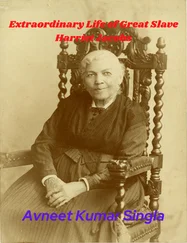We've grouped these behaviors into a leadership operating system that we call The Five Practices of Exemplary Leadership. 9 When making extraordinary things happen, leaders:
Model the Way
Inspire a Shared Vision
Challenge the Process
Enable Others to Act
Encourage the Heart
Let's take a brief look now at each of The Five Practices. We will explore them more completely in Chapters 2through 6. In those chapters you will find numerous stories and examples about how people much like you have applied them in their settings. We'll also provide several practical ideas about how you can learn to be the best leader you can be.
Model the WayTitles are granted, but it's your behavior that earns you respect. This sentiment was expressed in everyone's personal-best case, as represented by such comments as “I couldn't tell anyone what to do, I had to show them,” “I had to be a role model for the behavior I wanted from others,” and “I had to be clear about my personal values and then make sure that I walked the talk.” Exemplary leaders know that if they want to earn the respect of the people around them and achieve the highest standards, they must be models of the behavior they expect of others. Exemplary leaders Model the Way .
To effectively model the way, you first must be clear about your guiding principles. You must clarify values by finding your voice . When you understand who you are and the values you hold dear, then you can speak authentically about the beliefs that you want to guide your decisions and actions. But your values aren't the only values that matter. Leaders don't speak just for themselves. They also speak for the group, and in every team, organization, and community, there are others who also feel strongly about matters of principle. As a leader, you also must help identify and affirm the shared values of the group you are working with. Without an agreed-on and collective understanding of what is right and what is wrong, then anything goes, and there are neither practical nor ethical standards for people to follow.
When it comes to determining how serious leaders are about what they say, however, a leader's actions are far more important than their words. People listen to the talk, and then they watch the walk. Words and actions must be consistent for leaders to be believed, so exemplary leaders set the example by aligning actions with shared values . The best way that you prove that something is important is by doing it yourself. Through daily actions, leaders demonstrate their deep commitment to their beliefs and to the shared values of the groups they are part of.
Inspire a Shared VisionPeople describe their Personal-Best Leadership Experiences as times when they imagined exciting and meaningful futures for themselves and others. They reported actions such as: “I told the team that we need everyone's commitment to make our vision a reality, to reach our dreams and make them happen,” “The more I imagined what was possible, the more clearly I could describe what the future might hold in store for all of us,” and “We had to be aligned so that we could find a common purpose as a team going forward.” They had a desire to create something that no one else had ever created before. They had visions of what could be, and they had absolute faith and confidence that those aspirations could become reality. When performing at their best, leaders Inspire a Shared Vision .
In many ways, leaders live their lives backward. By building upon experiences, they see pictures in their mind's eye of what success will look like even before they've started their projects, much as architects draw blueprints or engineers build models. Their clear image of the future pulls them forward, and they are able to speak enthusiastically and energetically about the compelling possibilities. They envision the future by imagining exciting and ennobling possibilities .
Yet visions seen only by leaders are insufficient to create an organized movement or a significant change. People will not follow until they can embrace a vision as their own. They must be able to see exciting possibilities for themselves. To realize a vision, then, leaders have to be clear not only about why it is important to them, but they must be equally clear about why it is important to those they lead. To perform at their best, leaders enlist others in a common vision by appealing to shared ideals and aspirations .
When you truly understand and take to heart the hopes and dreams of those you are involved with, you can breathe life into the aspirations of others. You are able to forge a unity of purpose by explaining and showing how and why the dream is for the common good. The way you ignite passion in others is by expressing contagious enthusiasm for the compelling vision of the group, communicating their zeal through vivid language and an expressive style.
Challenge the ProcessEvery single personal-best leadership case involved some change from the status quo. Not one person claimed to achieve a personal best by keeping things the same, doing what had always been done. They said: “I needed to change the business-as-usual climate by finding ways to experiment and learn,” “We began by brainstorming what we would change if anything was possible,” and “We found that big things are done by doing lots of small things.” This is why leaders Challenge the Process .
Challenge is the crucible for greatness. It provides the context in which adversity and vision interact to provide for the creation of something new. When at their best leaders are pioneers. They are willing to step out into the unknown and continuously search for opportunities by seizing the initiative and by looking outward for innovative ways to improve .
While they are proactive, leaders aren't the only creators or originators of new programs, services, or processes. In fact, it's more likely that they're not. Innovation comes more from listening than from telling—more from asking questions and hearing what others are thinking and have to say. When challenging the process, your primary contributions are often the recognition of good ideas, the support of those ideas, and the willingness to challenge the system to get new products, processes, services, and systems adopted.
We also found that in the Personal-Best Leadership Experiences, leaders had to experiment and take risks by continually generating small wins and learning from experience . Leaders know well that innovation and change all involve trial and error. One way you can deal with these potential risks and failures is to approach change through incremental steps. Little victories, when piled on top of each other, build confidence that people can meet even the most significant challenges. In making those victories possible, you strengthen commitment to the long-term future.
Learning also unlocks the door to progress, and exemplary leaders make a point to ask “What can we learn?” when things don't go as expected. The best leaders are the best learners, treating every experiment, every innovation, and every mistake as an opportunity to develop and grow.
Enable Others to ActLeaders know they can't do it alone. Grand dreams don't become significant realities through the actions of a single person. In their personal-best cases, they showed their appreciation of this truth with statements such as: “It was necessary to take into consideration each person's perspectives and ensure that the decisions were made by the team and not individual decisions,” “The key was building relationships with people who were needed to help us make this happen,” and “Giving them the space and latitude to do their work gave them the confidence to do what hadn't been done before.” Leadership is a team effort, not a solo performance, and to make extraordinary things happen in organizations exemplary leaders Enable Others to Act .
Читать дальше












